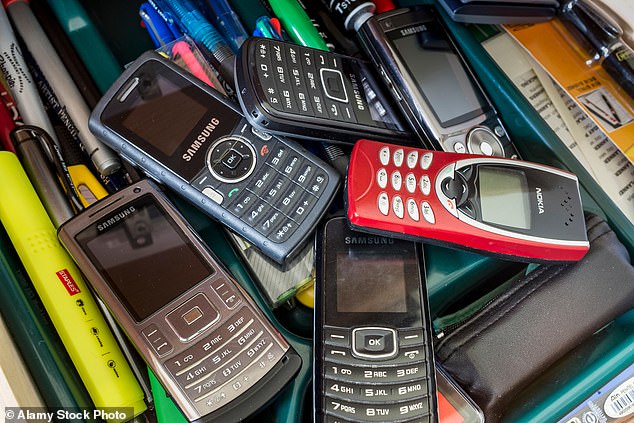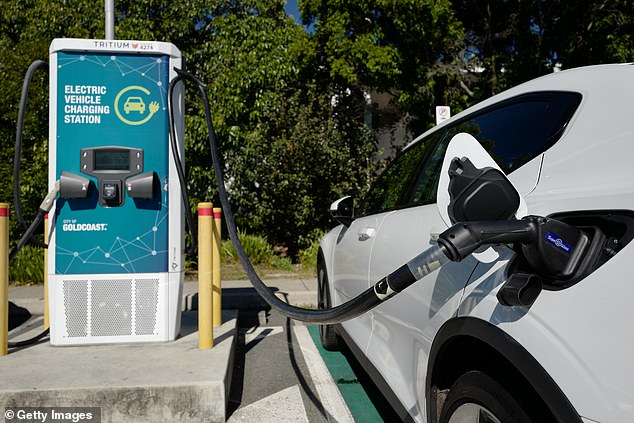Batteries found in mobile phones, electric cars and most modern appliances contain toxic “forever chemicals” that are spreading through the air and water, a study claims.
Scientists in the US have discovered that rechargeable lithium-ion batteries leak harmful substances called PFAS into the environment during production and after disposal.
One chemical of particular concern is bis-perfluoroalkyl sulfonimide (bis-FASI), which is currently unregulated but has been found to be as toxic as the well-known PFOA, found in pesticides, waterproof coatings and certain types of paint.
PFAS are called “forever chemicals” because they never leave the body once consumed.
Lithium-ion batteries are seen as part of the solution to global greenhouse gas emissions, but researchers fear they could produce chemicals harmful to humans.

Lithium-ion batteries are found in most modern consumer electronics, but they can leak “forever chemicals” during production and after disposal.
They are linked to serious health problems including cancer, high cholesterol, reduced kidney function, thyroid disease, low fertility, suppressed immune systems and low birth weight in babies.
There are also fears that they may affect growth, learning and behavioural development in babies and children.
PFAS chemicals have previously been found in food products, including fresh fruits and vegetables, as a result of pesticide contamination.
Lithium-ion batteries are considered a key element of the growing clean energy infrastructure. They are found in electric cars, mobile phones, medical devices, smart watches, laptops and other electronic devices.
Demand is expected to grow exponentially over the next decade. However, batteries only last so long before they need to be replaced.
Currently only five percent of lithium-ion batteries are recycled, and studies predict that up to eight million tons of them will end up in landfills by 2040.
Researchers from universities in Texas and North Carolina studied 75 surface water samples, five tap water samples, two groundwater samples, one snow sample, 15 sediment samples and 21 soil samples from 87 locations around the world, including Belgium and France.
They found bis-FASI chemicals from battery manufacturing plants and areas where they had been disposed of.
The data also suggest that atmospheric emissions of bis-FASI may facilitate long-range transport, meaning areas far from manufacturing sites may also be affected.
Professor Jennifer Guelfo, from Texas Tech University, said: ‘Our results reveal a dilemma associated with the manufacturing, disposal and recycling of clean energy infrastructure.
‘Reducing CO2 emissions with innovations such as electric cars is essential, but it should not have the side effect of increasing PFAS pollution.
“We need to facilitate technologies, manufacturing controls and recycling solutions that can combat the climate crisis without releasing highly recalcitrant pollutants.”
Analysis of several municipal landfills in the US revealed high concentrations of bis-FASI, indicating that these compounds may enter the environment through product disposal, including lithium-ion batteries.
Toxicity tests showed that concentrations of bis-FASI similar to those found at the sampling sites are highly dangerous for fish.
The toxicity of Bis-FASI has not yet been studied in humans, although other, more studied PFAS are linked to a variety of serious health hazards.
Tests showed that bis-FASI does not decompose during oxidation, highlighting its potential to persist in the environment forever.
However, the researchers found that bis-FASI concentrations in water could be reduced using granular activated carbon and ions.
Lee Ferguson, from Duke University in North Carolina, said: ‘These results illustrate that treatment approaches designed for PFOA and PFOS can also remove bis-FASI.
We must harness the expertise of scientists, engineers, sociologists and policy makers to develop and promote the use of clean energy infrastructure while minimizing the environmental footprint.
“We should build on the momentum of current energy initiatives to ensure that new energy technologies are truly clean.”
The study showed that bis-PFAS are used in lithium-ion battery electrolytes and binders. Other chemicals used in batteries do not meet the definition of PFAS.


